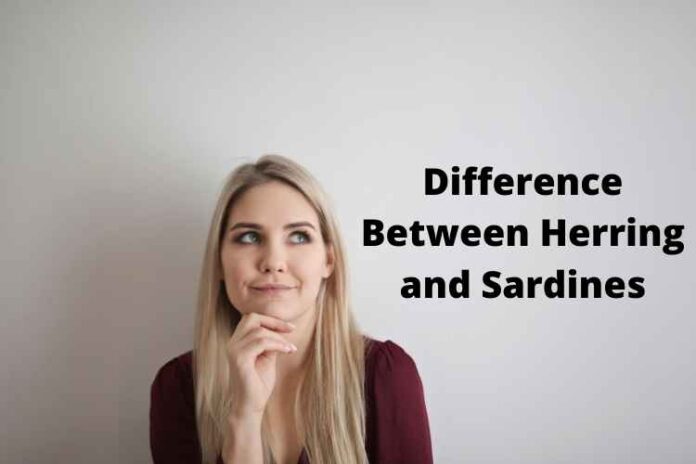In this blog we are going to tell you about Difference Between Herring and Sardines, so read this blog carefully to get the complete information.
Herring and Sardines, which are high in Omega 3, are among the most popular seafood. Russians, British, Scandinavians, Germans, and British have consumed the two for generations. Herrings and Sardines are so similar that canned herrings are frequently mistaken for sardines. Both forms of fish are high in vitamin D and zinc, but sardines have more calcium than herrings, with only about a quarter of the quantity. Apart from being abundant in Omega 3 fatty acids, the two do not collect pollutants seen in huge fish. The most significant difference between the two fish is how they are prepared. Let’s look at the distinctions between Herring And Sardines.
What is Herring?
The Clupeidae family of forage fish includes these. They like to reside along the shore and may be found in shallow waters in the North Atlantic, Pacific, and Baltic oceans, as well as on the west coast of South America. Pickled, smoked, and salted herrings are all options. Sardines, although a good source of calcium, have a higher concentration. Whales, sea lions, seagulls, and predatory fish such as salmon, billfish, halibut, and tuna are all predators of herring.
RELATED – DIFFERENCE BETWEEN PHO AND RAMEN
What is Sardines?
This is a tiny, oily feed fish that belongs to the herring family. Pickled, grilled, smoked, or canned, they’re all options. They’re high in Omega 3, minerals, and vitamins, with a single serving delivering 13 percent of the daily vitamin B2 need, 150 percent of the daily vitamin B12 requirement, and a fourth of the niacin requirement. Calcium, phosphorus, potassium, and trace minerals like selenium and iron are all abundant in them.
Common Differences
Although they are from the same family, the species C. harangus and S. pilchardus are different. Sardines have a more fishy, oily, and salty flavor than herring. Sardines have a meatier texture than herrings, which have a delicate feel. Herring has a greater B vitamin content than sardines, but fewer minerals.
Sardines and herrings have different nutritional contents depending on how they’re prepared and if they’re canned in oil or other sauces. Pickled herring contains 223 calories, sardines packed in oil provide 177 calories, and sardines packed in tomato sauce include 157 calories. In a 3-ounce portion, total fat content ranges from 8 to 15 grams, while protein content ranges from 12 to 20 grams. In either case, they’re a solid source of complete protein, with the smallest serving providing 21% of a man’s daily intake and 26% of a woman’s.
When it comes to omega-3 fatty acid content, you can’t go wrong with any of these fish. These polyunsaturated fats are necessary for cellular structure and proper nerve function in your brain. They also battle systemic inflammation, lower blood pressure, lower your risk of blood clots, and slow the progression of atherosclerotic plaques, which are linked to cardiovascular disease. A 100-gram serving of herring, or 4 ounces, has 1.7 grams of omega-3s, compared to 1.4 grams in sardines. Men should consume 1.6 grams per day, while women should consume 1.1 grams.
The only natural sources of vitamin B-12 are foods from animals, and herring and sardines are at the top of the list. Pickled herrings have 3.6 micrograms, or 150 percent of your daily value, whereas three ounces of sardines have roughly 8 micrograms or 316 percent. Vitamin B-12 aids in the metabolism of fatty acids and the production of healthy blood cells. It also clears your blood of the amino acid homocysteine. Vitamin B-12 may benefit your heart in this capacity, as elevated homocysteine levels are linked to an increased risk of cardiovascular disease.
Animal foods are the only natural sources of vitamin B-12, with herring and sardines topping the list. Pickled herrings contain 3.6 micrograms or 150 percent of your daily value, but three ounces of sardines have around 8 micrograms or 316 percent of your daily value. Vitamin B-12 helps with fatty acid metabolism and the creation of healthy blood cells. It also clears your blood of the amino acid homocysteine. Because high homocysteine levels are connected to an increased risk of cardiovascular disease, vitamin B-12 may help your heart in this way.
Conclusion
I Hope this blog is sufficient enough to provide the information about Difference Between Herring and Sardines. Thanks for reading this blog.


